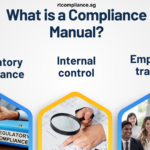Common Errors in XBRL Filing and How to Avoid Them
The submission of financial data is essential in the corporate reporting environment in Singapore. Financial statements are to be prepared in XBRL (eXtensible Business Reporting Language) format by companies that are incorporated under the Accounting and Corporate Regulatory Authority (ACRA). It is a digital standard that can facilitate comparative and machine-readable data, which enhances the transparency, effectiveness of regulations, and comparability.
Although there are evident guidelines provided by ACRA, various companies especially the small and medium enterprises (SMEs) still have challenges in preparing and submitting XBRL statements properly. Filing errors may result in fairly frequent rejection, fines, or a rollout of compliance because of common problems like data entry errors, incorrect tagging or lack of understanding of compliance mandates, including the required forms for registered fund management company RFMC Singapore when dealing with regulated financial submissions.
The article discusses the most common mistakes that are committed by companies in XBRL filing and provides guidelines that may be followed in practice to achieve a high level of quality and conformance.

Knowing about XBRL Filing Requirements.
It is worthwhile to know the relevance of XBRL before delving into the mistakes. This was done to increase the consistency of financial data and access to regulators, investors, and stakeholders. XBRL submissions are made of structured data rather than the fixed statements in PDF copy which means that ACRA can analyze and compare company information in a more efficient manner.
Singapore entities can be mandated to file Full XBRL, Simplified XBRL or Financial Statements Highlights (FSH) depending on the size and type of the company. All formats have their requirements and it is necessary to understand which one is important to your business.
The companies not complying and providing incomplete XBRL filings might receive penalties and be scrutinized more closely by ACRA.
Mistakes when filling the XBRL.
Although ACRA offers step-by-step instructions and templates, most of the businesses still commit errors when submitting XBRL. The most common are the following to be careful of:
Incorrect Data Tagging
Among the most common ones, there is improper data tagging. Every financial component, e.g., revenue, expenses, or assets, has to be properly tagged with the help of the taxonomy of ACRA. Tagging errors are cases where users label the figures or fail to plot the figures.
As an example, the cause of misclassifying Trade Receivables as Other Assets can alter financial interpretations and cause validation errors in the BizFinx preparation tool.
Incomplete Financial Data
Certain businesses also present distorted financial reports or ignore additional notes. ACRA mandates all the financial information, such as the balance sheet, income statement, cash flow, and notes to accounts. The lack of information may lead to rejections and noncompliance.
Using Outdated Templates
The XBRL taxonomies are revised on a periodical basis to appease new accounting standards. Lots of companies mindlessly apply outdated templates, resulting in an inadequate data structure and unsuccessful verifications. In a bid to comply, it is imperative that you update yourself to the most recent version of ACRA taxonomy.
XBRL and Audited Accounts Mismatch.
ACRA anticipates that your XBRL filing has all the figures that are matched with your audited financial statements. Differences-even the minor ones- may indicate possible inconsistency or errors in data input. Figure reconciliation should be always done.
Insufficient Annual Review and Quality Inspections.
Businesses tend to hurry up in order to submit their files without internal audits. Such errors as not-needed rounding, not included disclosure, or duplicate entries may occur due to the absence of proper validation or cross-checking
The Impact of Frequent Filing Mistakes
The frequent mistakes in XBRL financial statement filing don’t just delay approval—they can have serious regulatory and reputational consequences.
- Rejection of Submission: ACRA system may reject incorrect or incomplete XBRL files, forcing them to resubmit them and possibly miss annual filing deadlines.
- Monetary Fines: Failure or tardiness to submit the filings would be subject to monetary fines and can be punished in accordance with the Companies Act.
- Audit and Compliance Risks: While the error of repeated filings may result into more scrutiny by regulators, auditors, or investors.
- Credibility Break: The credibility of the company must be established by reporting the truth. Lack of consistency in data can impact the image and access to funding of a company.
These dangers make business enterprises be proactive in order to prevent recurrences of errors.
Best Practice of an accurate XBRL Filing.
In order to make the submissions smooth and compliant, the businesses are expected to abide by best practices within the industry and internal controls.
Implementing the best practices to prevent XBRL filing errors in Singapore can greatly reduce compliance risk.
BizFinx Preparation Tool at ACRA.
The BizFinx preparation application is the official ACRA software of preparing XBRL financial statements. It comprises in-built checks, instructions, and templates that are in line with the existing taxonomies. Companies can also minimize the error of tagging manually and enhance accuracy with the help of this tool.
Keep Current Records of Accounting.
Financial information accuracy commences with proper accounting records. Make sure that you have updated your bookkeeping and trial balances and then convert them to XBRL format. Any inconsistencies in the data at the background will impact on the final submission.
Hire Competent Midwives.
You may want to employ certified accountants or XBRL experts who can be conversant with the requirements of ACRA. Preparation of XBRL needs to be outsourced as it can save time and reduce the chances of error, especially when dealing with complicated financial statements.
Carry out Internal Reviews and Cross-Validation.
Conduct in-house check before submitting your XBRL file to make sure that all the figures are in line with audited financial statements. The BizFinx tool has a validation option which is used to detect errors.
Keep Up with Regulatory Changes.
There are instances where ACRA revises its filing requirements and taxonomies. The frequent observance of ACRA announcements is the surest way to make sure that your company does not violate the new standards.
Implement a Filing Calendar
Set up a systematic compliance timeline and significant filing dates and control points. It will allow avoiding last-minute rush and provide your team with ample time to look through data before the deadline.
Using Technology to facilitate an error-free filing.
Accounting systems of today have been able to establish direct integration with XBRL filing tools thus making it easier to produce correct reports. Cloud solutions, e.g. can automatically label financial data and minimize human error.
XBRL preparation can be automated and it does not require control but simplifies the validation of data, enhances transparency and also saves the time.
Moreover, firms implementing digital solutions enjoy more convenience during partners coordination between the finance teams, auditors, and third-party consultants- all parties operate with the identical data version.
Common Pitfalls to Avoid
Despite the appropriate tools, there are still pitfalls that lead to problems of many companies:
- Directly copying data in excel without checking formatting and decimal point.
- Failing to complete filings by disregarding the required fields in the taxology.
- Ignoring the changes in the financial reporting norms that affect the XBRL structure.
- Allowing employees who lack training to do the filing without supervision.
The combination of technology, professional skills, and thorough internal scrutiny is needed to avoid these pitfalls.
The Why of 17 getting XBRL Right.
Proper XBRL filings are not only about regulation compliance, but also about financial soundness of a company. Validated and properly tagged data will assist investors in making proper choices and increase corporate transparency.
Clean and compliant XBRL reports are responsible and professional to SMEs who want to attract investors or apply to lenders to finance their operations. On the other hand, recurring misstatements may put a warning signal on the quality of the internal controls and management of a company.
Conclusion to Common Errors in XBRL Filing and How to Avoid Them
One must also learn how to do the XBRL filing to ensure business compliance and credibility in the competitive Singaporean business climate. Although the process might appear to be complicated, a majority of the challenges are preventable by preparation, professional advice, and regular review.
Being aware of the common errors in XBRL financial statement filing and adopting the best practices to eliminate XBRL filing errors in Singapore, the companies can make sure of accurate filing, prevent the penalties, and enhance reliability of their financial reporting.
Accuracy and transparency, which are two favorable traits of a responsible company, are encouraged by Singapore having a digital-first regulatory environment, and which need to be prioritized in handling its XBRL obligations.




